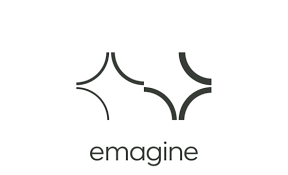A well-heeled woman with perfectly placed hair and manicured nails clasps her Blackberry as she strolls through the entrance of the eccentric off-off-Broadway fringe venue, Warehouse 9. After revealing she has been invited to Copenhagen to shed some light on how to program large-scale cultural events, the charismatic performer and owner of Warehouse 9, Jørgen Callesen, couldn’t help but beg the question: “So what are you doing here?” Without missing a beat, the woman replies: “Well, this is where things happen; this is where life meets art.”
Located in the brown meat district of Kødbyen, Warehouse 9 is one of the first continuous spaces in Denmark to act as a professional art venue and gallery space that hosts international performances, experimental art and sexual-political work dealing with important contemporary issues – the provocative, the new and the interesting.
Housed in an old historic stable, the space is designed to cater to cross aesthetic disciplines. It’s not just a theatre, a white cube galley, a cinema, or a lecture hall; it can be all of these and more. This freedom allows ‘just a room’ to break boundaries and create new links between a myriad of genres including art, film, music, dance and poetry.
Frighteningly, cities like New York, London and Paris, known for their robust arts and culture scene, are facing an epidemic as gentrification destroys the artist-run venues with smaller budgets, in turn destroying the cities’ cultural capitals. Upon visiting Warehouse 9, artist and Warhol-superstar Penny Arcade acknowledged that places like this didn’t exist in New York as “they have all been cleaned out”.
Sadly, we know the model all too well – the artists breathe life, culture and vibrancy into an area, and then the prices go up and only more established companies with bigger economies can stay. So the artists leave and the culture-hungry tourists end up with an expensive cocktail instead. Needless to say, the area quickly becomes as lifeless and limp as a celery stick in a Bloody Mary.
Thankfully Jørgen Callesen, the visionary founder and artistic director of Warehouse 9, who is known under the performer title Miss Fish, had the foresight to secure a long-term lease agreement so the venue can remain central and produce what every city wants: a little pearl of cultural capital. It’s an important issue close to the heart of Warehouse 9 organisers: “We are very concerned about city development, gentrification and keeping art in public spaces.”
The organisation is structured in a way that ensures flexibility, and the mode of production can scale up and down depending on funding. While the venue has been on the brink of closure when in between funding, the strong community and support network behind Warehouse 9 has ensured its survival and caused audiences to exclaim: “Thank god you’re here!”
Warehouse 9 certainly doesn’t fit into one particular box, which is often referred to in jest as a ‘bastard project’. The performance venue also acts as a hub to connect socio-cultural projects within the queer scene. Current projects include the Tea-Lounge Society, a self-sustaining socio-cultural project for transgendered people, and the Nordic and Baltic queer art network, queerart.org, which is a platform for artists in these areas who produce gender-political art to connect and share art.
While some may question an art venue’s role in tackling social issues, Callesen believes art provides a space for people to be free from taboos and create change. “We wish to educate Denmark a little about artists not just being self-indulgent people who just want to express themselves and receive government grants – they are engaged in further development and give something back to the community.”
There is no denying the diversity of the venue: from a sold-out burlesque festival hosted by Dirty Martini and attended by the ‘gray gold’ of Denmark, to a cabaret featuring queer icon David Hoyle and an upcoming performance and book release by object theatre pioneer, Gyula Molnàr. The venue has often been described positively as a switchboard between the different worlds, and Callesen believes this is the true beauty of the space: “If people want to explore a city, they want something challenging or unpredictable and they want to discover something for themselves.”
The inclusion of Hungarian author, actor and genre-creating performer, Gyula Molnàr in this seasons’ programme is an example of the venue’s multi-disciplinary branding strategy. As Callesen describes it: “Molnàr’s performance style is not the spectacular, out-there queer, it is the contrary: it’s poetic. That’s the key – it doesn’t have to be queer or radical, our focus is to create a programme that is cross-aesthetic.”
You can see Gyula Molnàr’s humourous, touching and tragic hit production, Piccoli Suicidi, this weekend and witness for yourself the dazzling diamond of culture that is Warehouse 9.
Gyula Molnàr at Warehouse 9
Halmtorvet 11C, Cph V; Book reception and performance, Fri 19:00-22:00; Artist talk and performance, Sun 16:00-18:00; tickets: 60kr; www.warehouse9.dk













